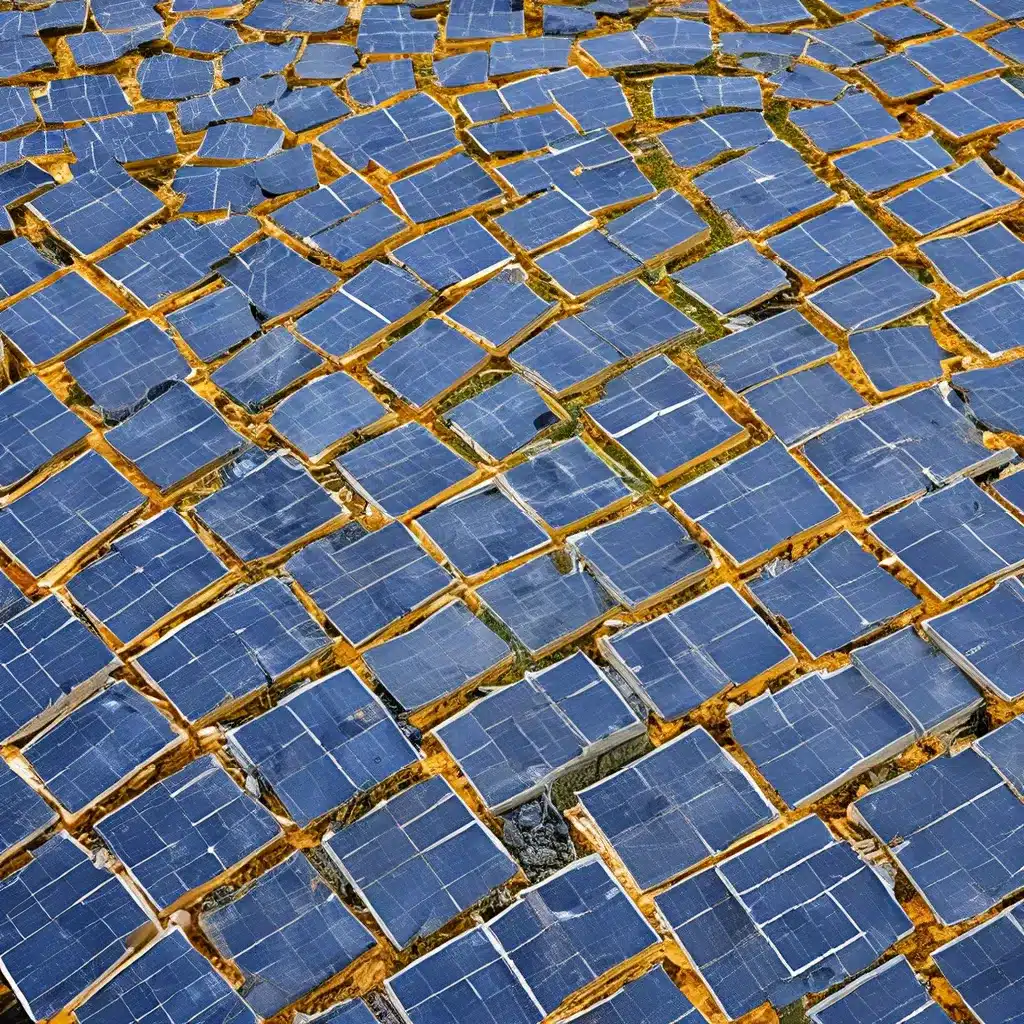
As someone passionate about the future of renewable energy, I’m thrilled to dive into the fascinating world of innovative materials and components that are revolutionizing this industry. It’s an exciting time, my friends, with breakthroughs happening left and right that are poised to transform the way we power our world.
The Challenges of Large-Scale Renewable Energy Manufacturing
Let me paint you a picture: Imagine trying to build colossal pieces of precision machinery that weigh over 10 tons. These components need to function flawlessly when fully assembled, and the process has to be completed as quickly as possible to avoid any delays in getting these crucial clean energy technologies up and running. Oh, and on top of that, material waste needs to be minimized. It’s a real head-scratcher, isn’t it?
Well, the truth is, our current domestic manufacturing sector has been struggling to competitively produce these large metallic components using conventional methods like casting and forging. This has resulted in increased production costs, longer lead times, and a reliance on foreign supply chains – all of which have seriously inhibited our ability to manufacture large and complex clean energy systems.
The Department of Energy has recognized this challenge and is taking action to address it head-on. They’re pouring millions of dollars into projects that aim to transform the way we approach large-scale renewable energy manufacturing. And let me tell you, the solutions they’re developing are nothing short of mind-blowing.
The Rise of Advanced Near-Net-Shape Manufacturing
Enter the world of near-net-shape (NNS) manufacturing. This refers to processes, both traditional and new, that aim to fabricate components that are close in size and shape to the finished product. By reducing the amount of subsequent finishing steps like machining, NNS manufacturing can significantly lower production costs and times.
One exciting project funded by the Department of Energy’s Advanced Materials and Manufacturing Technologies Office (AMMTO) is the development of an advanced casting cell (ACC) – a 3D printer specifically designed to print large sand-casting molds for wind turbine rotor hubs and hydropower turbine components. This technology has the potential to reduce lead times by a whopping four months and overall hydropower costs by 20%!
But that’s not all. The team is also working on a robotic welding process to assemble the turbine blades, plate, and rotating shaft of a more than 10-ton Francis runner – currently the most commonly used model of hydropower turbine. By leveraging advanced 3D printing and smart manufacturing, this project aims to transform the casting industry and pave the way for a new era of renewable energy production.
The Power of Robotic Hybrid Additive Manufacturing
But wait, there’s more! Another groundbreaking project funded by the Department of Energy’s AMMTO and Water Power Technologies Office is taking a fundamentally different approach to manufacturing large-scale metallic components.
This innovative project, led by the Oak Ridge National Laboratory (ORNL) in collaboration with the Tennessee Valley Authority (TVA), is focused on developing a robotic hybrid additive manufacturing process. Unlike traditional casting, this technology involves directly 3D printing large-scale metal structures, which has the potential to cut the lead time in half.
The project will produce a full-scale Francis runner and work with TVA to install and demonstrate this cutting-edge hydropower turbine at the Wilson Dam on the Tennessee River. It’s a testament to the power of collaboration and the drive to push the boundaries of what’s possible in renewable energy manufacturing.
The Ripple Effects of Domestic Manufacturing Innovations
These two projects are just the tip of the iceberg when it comes to the innovations happening in the realm of renewable energy materials and components. As the American manufacturing sector continues to develop methods to create renewable energy technologies at home, the Department of Energy remains laser-focused on modernizing and streamlining the process.
By addressing the challenges of domestic large-component manufacturing, these initiatives don’t just benefit the renewable energy industry – they have the potential to strengthen the entire domestic supply chain. This, in turn, sets our nation on a clear path towards achieving our ambitious clean energy goals, like the target of 100% clean electricity by 2035 and net-zero emissions by 2050.
And the best part? These advancements aren’t just limited to wind and hydropower. Material innovations are also revolutionizing the production of green hydrogen, another crucial piece of the renewable energy puzzle. From novel catalyst materials to innovative membrane designs, the future of sustainable energy production is brighter than ever.
Embracing the Challenges, Fueling the Future
As I’ve delved into these incredible innovations, I can’t help but feel a sense of excitement and optimism for the future of renewable energy. Yes, the challenges are daunting, but the solutions being developed are nothing short of awe-inspiring.
Imagine a world where we can produce large, precision-engineered components for wind turbines, hydropower plants, and beyond – all while minimizing waste and streamlining the manufacturing process. It’s a future that’s within our grasp, thanks to the tireless efforts of researchers, engineers, and innovators who are pushing the boundaries of what’s possible.
And you know what? I’m not afraid to tackle these 10-ton problems. In fact, I can’t wait to see what other groundbreaking advancements are just around the corner. Because when it comes to renewable energy, the sky’s the limit, my friends. Firewinder is committed to staying at the forefront of these exciting developments, and I’m excited to be a part of this clean energy revolution.
So, let’s keep exploring, experimenting, and embracing the challenges that lie ahead. The future of our planet depends on it, and I know that together, we can create a brighter, more sustainable tomorrow.

